Are you sick of mowing all the time? Why not replace that time consuming, resource draining lawn with a beautiful meadow of low-growing chamomile?
Perfect for slopes and other hard to reach spots, a chamomile lawn requires no regular mowing, fertilizing, or watering.
Furthermore, it can improve the soil, attract pollinators, and the flowers can be used to make delicious tea!
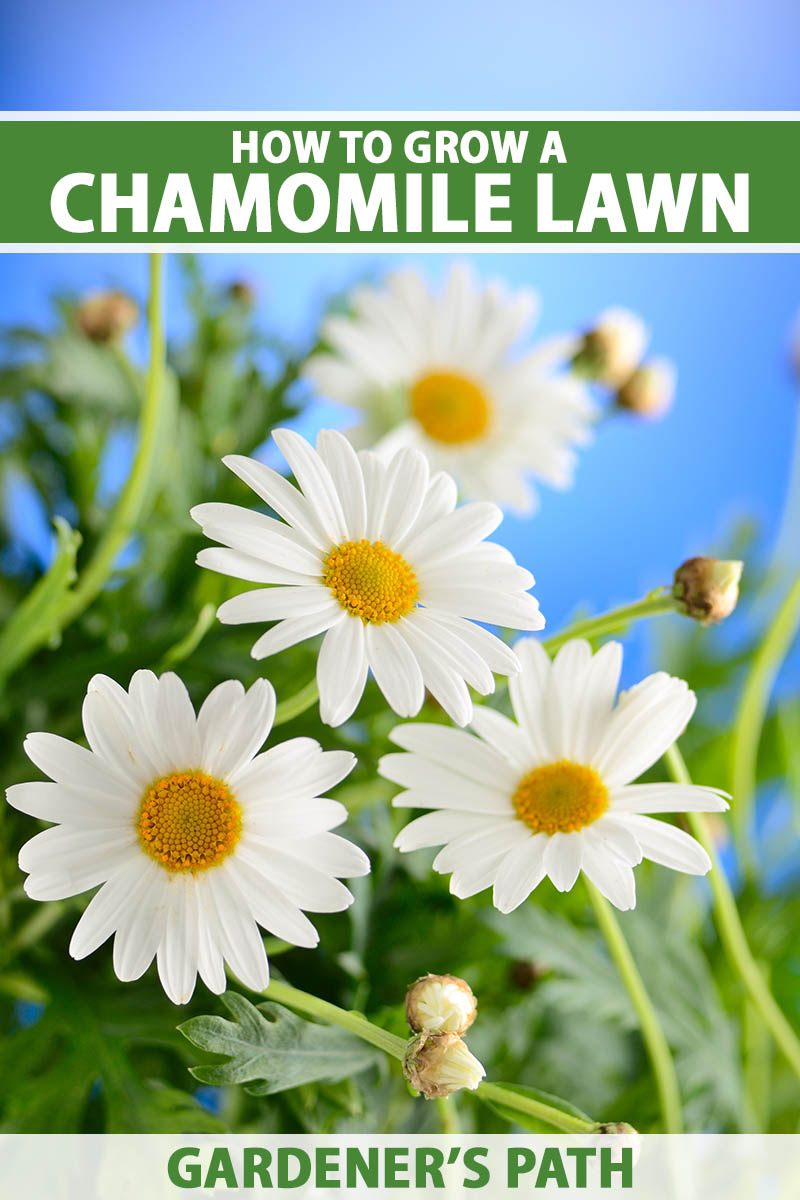
We link to vendors to help you find relevant products. If you buy from one of our links, we may earn a commission.
In this guide, I’ll cover how to grow chamomile as a ground cover to replace your lawn.
Here’s what’s to come:
What You’ll Learn
Benefits of a Chamomile Lawn
The benefits of a chamomile lawn are numerous.
Significantly lower maintenance than conventional lawns, mowing, fertilizing, and watering needs are minimal, making it a perfect choice for time consuming or difficult to manage areas like hillsides, large fields, or heavily landscaped sections of the yard.
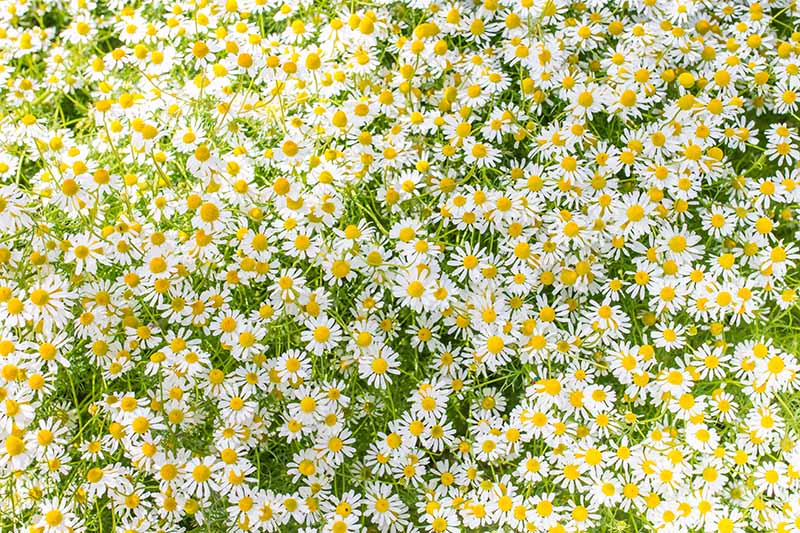
As opposed to nitrogen-sucking grass, these lawns are high in nutrients and actually help to improve the soil.
They can also be artfully arranged with other ground covers and planted as borders along paths.

And of course, don’t forget about those lovely little flowers! Those you don’t pick for a relaxing cup of tea will help attract pollinators and other beneficial insects to your garden.
The only downside is that these lawns aren’t incredibly tolerant of heavy trampling, so they may not be the best in areas with high foot traffic such as kids’ play areas.
However, they can tolerate some amount of wear once established, and actually release a sweet apple-like aroma when stepped upon.
Selecting Species
It is important to choose the appropriate species for this purpose.
German chamomile, the plant often grown in herb gardens, has a tall and upright habit that is not ideal for lawn growing.
Instead, look for Chamaemelum nobile, also known as English or Roman chamomile, which has a creeping habit and grows low to the ground.

These plants grow dense mats of fern-like foliage that spreads about 12 inches wide, reaching only three to six inches tall.
The small daisy-like flowers with white rays and yellow centers bloom through the summer and into fall.
You can find seeds in a variety of packet sizes available from True Leaf Market.
If you desire a neater look without flowers, C. nobile ‘Treneague’ is the way to go.
This Roman cultivar is non-flowering, with aromatic dense foliage that creates a smoother, more manicured look. It grows up to four inches tall and spreads 18 inches wide.
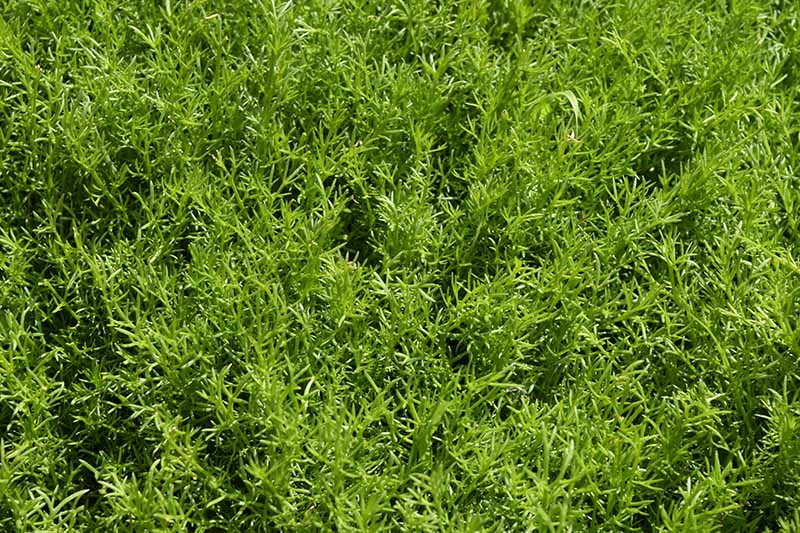
Incredibly hardy, C. nobile can be grown in USDA Hardiness Zones 4 through 11.
You can learn more about the differences between English and German varieties here.
Planting
Chamomile grows easily from seed, and the best time to plant is in early fall or spring. These plants prefer full sun and well draining loamy soil.
Prepare the planting area by removing weeds and leveling out the soil. Heavy soil can be amended with a mixture of sand and compost.
Prior to seeding, turn three inches of compost and one inch of sand into the top six inches of soil and rake until smooth.
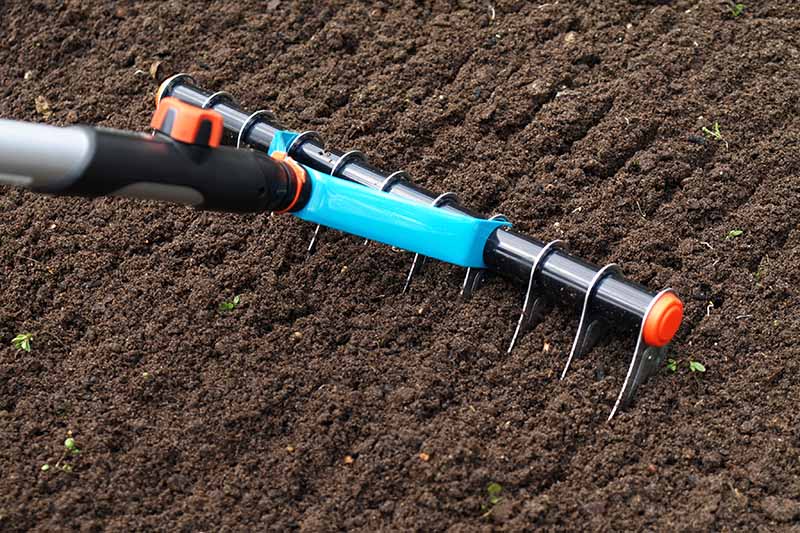
In early fall, or after all threat of frost has passed in spring, broadcast seeds on the surface at a rate of 1/2 oz for every 1,000 square feet of area and tamp lightly to keep in place.
Water lightly after planting and keep the soil moist until seedlings appear. When plants are three inches tall they can be thinned to about six inches apart.
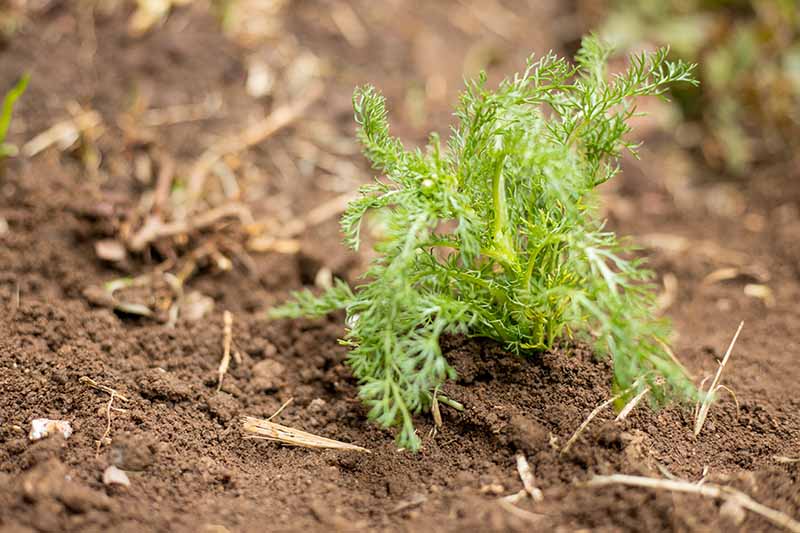
You can also start seeds indoors in early spring, about six to eight weeks before the average last frost date in your area.
Surface sow seeds in trays filled with your preferred seed starting mix. A heated germination pad set to 65°F will help speed things along.
Keep the seed trays in a sunny position on a windowsill where they’ll receive six hours of sunlight per day, or under grow lights.
Maintain even moisture, and they should germinate in about two weeks.
Plant seedlings or purchased transplants outside after the last frost, spacing starts four to eight inches apart.
For detailed cultivation instructions, check out our guide to growing chamomile here.
Care and Maintenance
After planting, avoid walking on the lawn for at least 12 weeks and then be sure to tread carefully for the first year, to allow the plants to become established.
Give plants about one inch of water a week during the first season. When they are well established, plants are drought tolerant and only need occasional watering during dry spells.
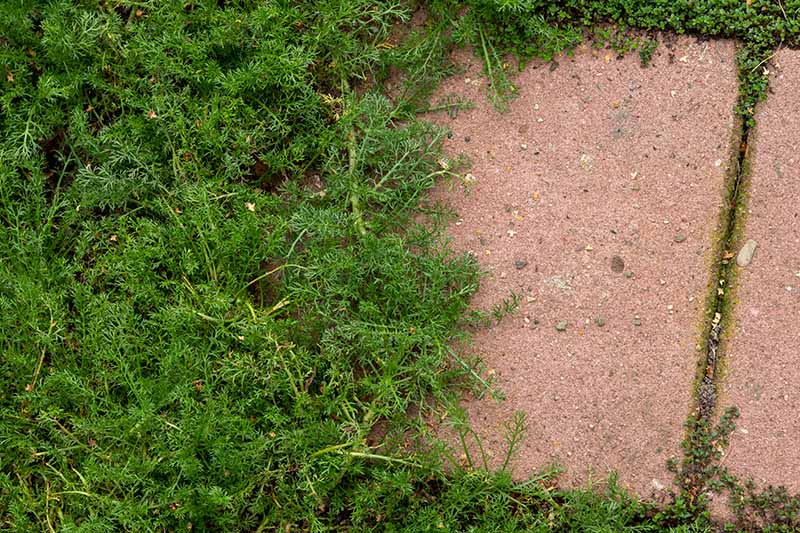
One of the main benefits of a chamomile lawn is that it doesn’t require much in the way of care.
If weeds crop up, pull them out manually, and refrain from using herbicides.
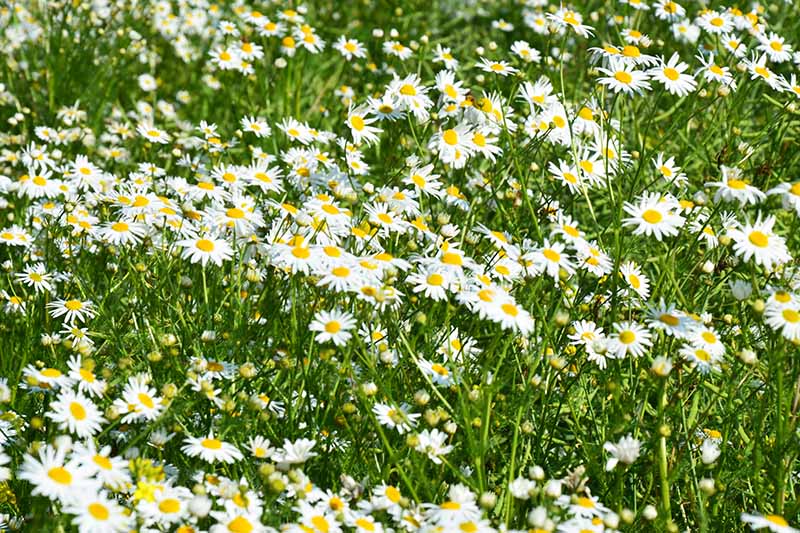
If you like, you can mow or hand trim once in late summer to remove dead flower heads and keep plants looking more manicured.
That’s really all there is to it!
A Note of Caution
Chamomile is a member of the Asteraceae family, a plant family that is known to cause allergic reactions in some people.
While rare, it is possible to experience reactions such as contact dermatitis when exposed to these plants. People who are allergic to related plants such as ragweed are more likely to experience symptoms.
According to the ASPCA, the Roman variety is toxic to cats, dogs, and horses. While rarely lethal, ingestion can cause reactions ranging from irritation to vomiting, diarrhea, and internal bleeding.
Mow No More
So, what are you waiting for? Turn your yard into a meadow of fragrant chamomile, sit back with some relaxing tea, and forget your lawn maintenance woes.
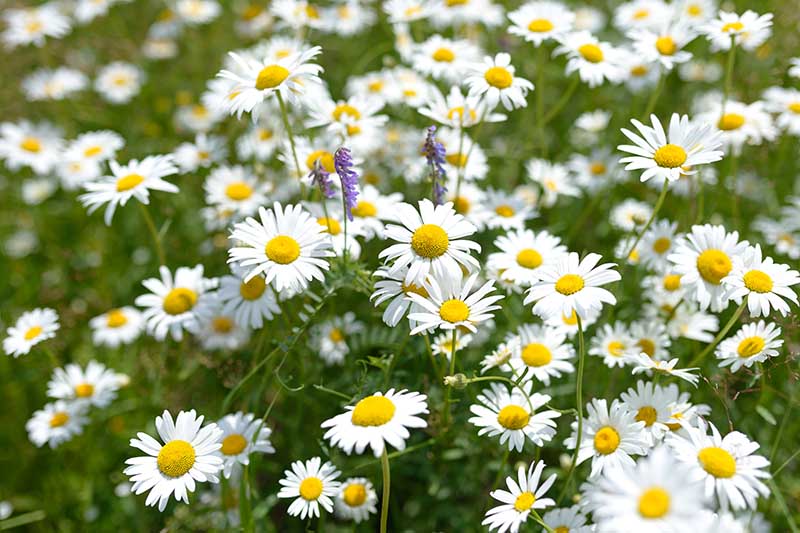
Have you tried growing a chamomile lawn? Share your stories and tips in the comments below!
Looking for more information about growing chamomile? Check out these articles next:
© Ask the Experts, LLC. ALL RIGHTS RESERVED. See our TOS for more details. Product photos via True Leaf Market. Uncredited photos: Shutterstock.

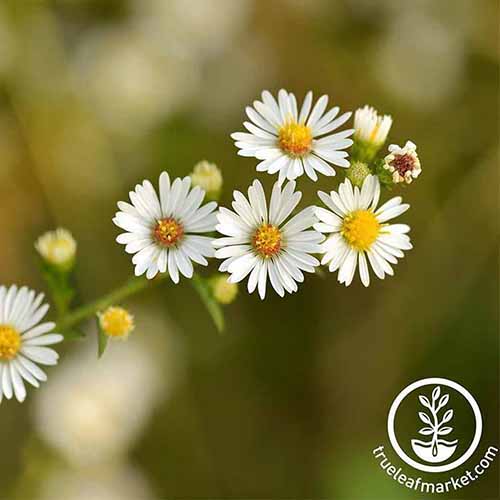


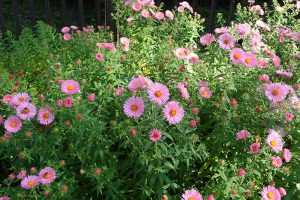
I think I will try planting chamomile instead of wild grass. You show a photo with a tool (rake like) for turning the compost and sand into the soil. Would you provide a link or model for that tool please?
Hi Lori, that’s an aerator/cutter rake head, which you can find available from Gardena via Amazon. Let us know how your chamomile lawn turns out!
To be chamomile farmer
I have had a chamomile lawn for about 10 years. I generally love it. In Spring, after a cold and wet Scottish winter, it does look a little tired. Each year I propagate cuttings to slot into any bare patches. I love walking on it just before I get in the car and enjoy the scent on my journey. However, it is certainly not low maintenance. For a 10 square meter area I spend 6-8 hours in the Spring pulling weeds and throughout the summer I weed every day for a few minutes that I am in the garden. There… Read more »
Thanks for sharing Sally! Your chamomile lawn sounds wonderful, and beautifully maintained. Happy gardening!